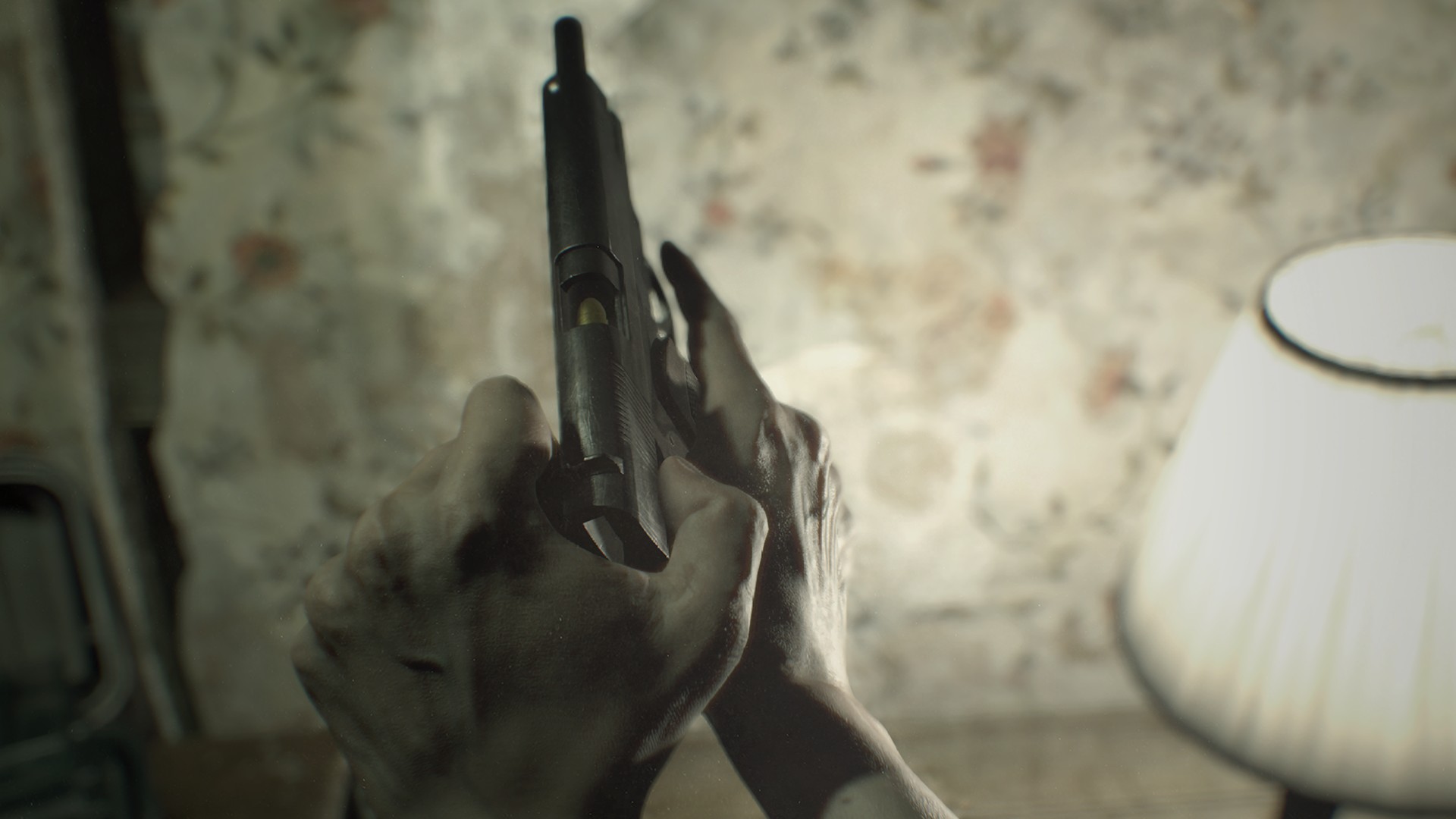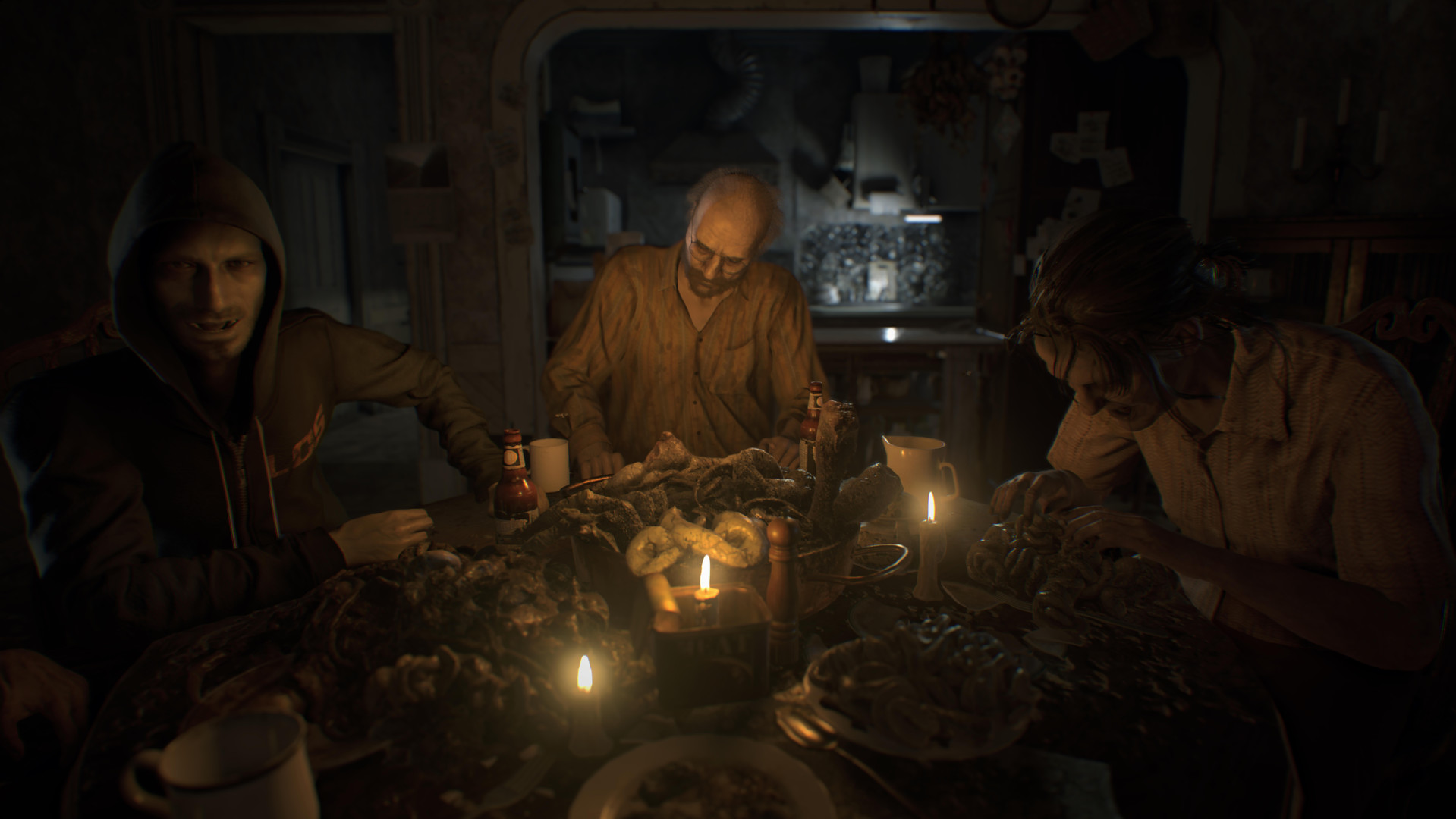Village of Fools - The Tragedy of Resident Evil 8
Another year, another Resident Evil.
Granted, that is not quite a fair assessment, Capcom’s venerable zombie killing series of videogames is not truly an annual affair. The last all-new numbered entry into the franchise was 2017’s Resident Evil 7, while the last two years saw high budget remakes of Resident Evil 2 and 3 respectively. And now, in 2021, we are introduced to Resident Evil 8, or Resident Evil VIllAGE as it is styled in some marketing materials—or VILLAGE – Resident Evil. Something about a small settlement.
What came into my mind after finishing this latest romp was the question of what Resident Evil even is any longer these days. The original games were essentially a collection of (American) B- and C- movie tropes reflected through a Japanese lens. Flesh eating zombies, check. Caused by a virus, check. A virus created in a lab by mad scientists, check.
In terms of gameplay, the first games had the somewhat unifying element that they took place in a confined environment that the player had to explore and scour for resources to use against the undead inhabitants and for keys to progress. Resources were traditionally very scarce, every shot had to land. But the series also became infamous for being primarily about inventory management, since the player might find enough ammo, but then lack the space to carry the next key. The games were pretty hard, in part by design, in part by inconvenience caused by technological limitations.
What made a Resident Evil game changed over time, however. What began as a tightly designed series that focused on gameplay with a plot and characters stitched together from zombie flick tropes eventually became its own thing, with a lot of more or less nonsensical deep lore about the evil Umbrella corporation, the Raccoon City special police forces S.T.A.R.S., and counter-zombie strike team B.S.A.A. The zombie game turned into a weird anime with a hard-on for guns and uniforms, where grizzled straight-played (intentionally or not) parodies of gruff soldier archetypes fought towering nightmares made of flesh.
Then Resident Evil 7 happened and dialed things back significantly. Following the critically panned sixth entry into the series, an entry that consisted mostly of cutscenes and the deepest of deep Umbrella Corporation lore, part 7 went into the opposite direction. Instead of a globe hopping, grand, world saving narrative whose explosive exploits and paper-thin plot would make Michael Bay blush, Resident Evil 7 went small. An attempt at wiping the slate clean.
 |
| While both Resident Evil 7 and 8 feature first person shooting, they are not really shooters, per genre definition |
The seventh game introduced a new protagonist, entirely untouched by any of the world-spanning conspiracies, an everyman who was neither a member of the Raccoon City police force nor of the government anti-zombie strike team. He was just Ethan. And his problem wasn’t zombie hordes, but a single family living in a sprawling farmhouse in rural Louisiana.
Where most of Resident Evil took inspiration from George R. Romero, James Cameron and a whole slew of crappy zombie flicks from the 80s and 90s, part 7 took a deliberate step back and reoriented the series.
Instead of Dawn of the Dead, Resident Evil 7’s main influence was Tobe Hooper’s 1969 The Texas Chainsaw Massacre and its direct sequel as well as many more recent horror films that follow in the original TCMs thematic footsteps. More Rob Zombie than either slow or fast zombies. More SAW than gothic horror, with clear nods to the more recent horror film genres like torture porn and found footage. All of this made for a fresh, exciting experience that was much more intimate and intense than previous entries into the franchise. Much of this intimacy also came down to a change in perspective: Resident Evil 7 was the first game in the series using a first person view throughout.
 |
| The dinner scene especially evokes the original Texas Chainsaw Massacre |
So with 7 the series seemed to engage in a soft reboot: the setting was a self-contained if sprawling farmhouse and the immediate surrounding areas, the gameplay focused on few intense encounters rather than hordes of monsters, and the focus returned to survival horror instead of action.
But while Resident Evil 7 was overall an impressive, frightening, disturbing and really good game, it was not necessarily a good Resident Evil. This might have been one of the reasons the game was the worst selling entry in the series in years—which might have also been due to the rather poor reception of the preceding title by critics and players alike. Resident Evil 7 contained little in terms of narrative tissue connecting its plot with that of the larger Resident Evil universe. Yes, the Umbrella Corporation was eventually revealed as the inciting factor, and one of the series’ traditional characters made a last-minute cameo appearance. Some traditional gameplay elements—especially weird key items hidden in weirder places—did make appearances. But for the most part, Resident Evil 7 was a step in a new, fresh direction.
Now the next sequel is out. And Capcom apparently felt that the subdued, intimate and disturbing scares of the predecessors were not working, at least not when it came to translating those to sales. Resident Evil 8 brings back much of the series staples in terms of tone. While the previous entry’s protagonist, everyman Ethan Winters, returns, this time his problems are not as mundane as a family of crazies living in the boondocks. Or rather, his problem is still a family of crazies, but these crazies are less antagonists of a Tobe Hooper film and more Todd McFarlane horror figurines.
Coming from, and having thoroughly enjoyed, Resident Evil 7, this was something of a tonal whiplash. Not that this was necessarily unexpected. One could hardly take a glance at video game conversations online in the past half year without coming across footage of the suspiciously tall vampire lady who features as one of the game’s bosses. Capcom made it very clear from the outset that this game would be very different in tone from 7, leaning much heavier into silly camp. But just how different things ended up still surprised me.
Ultimately I believe Village is a much weaker game than its predecessor overall. The Resident Evil series had become overly reliant on self-references and its silly deep lore. Stepping away from that was a long overdue and right decision. I also don’t think that this decision was what drove players away from Resident Evil 7. Rather I would think that the poor reception of Resident Evil 6 resulted in fans tiring of the series and simply not returning. Therefore, I would also argue that the success of Village now is not all due to its “return to form” but rather because of a relatively strong reception of the predecessor. I would wonder how the long-term sales of part seven turned out, for example.
 |
| Some series staple characters return in Village |
Resident Evil 8 has issues. The narrative is poorly designed and most characters badly written. Granted, this is Resident Evil, so I don’t expect Shakespeare. But even trash can be done elegantly, and this isn’t that. Worse, the gameplay and especially the gunplay is lackluster. Which becomes grating since the game markedly leans heavier into action than its direct predecessor. Something that most games in the series got right was the heft and impact of its guns. Shooting zombies in the head always felt satisfying. Combat was an intense affair. This time around shooting lacks impact and the enemies lack bite. Pun intended.
Village very consciously evokes the fourth part in the series, the one that revolutionized third-person action games for a generation. The one that for a few games in a row turned the series from survival horror to horror action. But Village’s action gameplay is tremendously weaker in comparison. The game thus becomes a worst of both worlds. Capcom turned away from horror, making nods towards action gameplay without sufficiently developing satisfying action gameplay mechanics.
Which doesn’t mean that Resident Evil Village isn’t a fun experience at the end of the day. What the game turns out to be though is a disappointing entry that suffers from a severe case of identity confusion. It has some glaring flaws in its narrative design, which mostly manifest in a propensity of yanking controls from the player more often than necessary and having the player character lose or behave poorly during those cutscenes. Which then often return control to the player without being entirely clear about it. It is also a very uneven experience throughout. Some parts of the game shine with inventive level design and interesting gameplay ideas, while others suffer from half-baked combat mechanics and a contrived core game loop that takes too long to fully manifest.
 |
| These girls are fun, but sadly they leave too soon |
One of the biggest problems however is that the game simply dissolves in its final push, where eyeroll inducing twists follow badly shoehorned deep lore cuts follow mechanically uninteresting boss encounters. Granted, the predecessor also did not end on a strong note, but here the depths the game plunges to are deeper. The game’s main villain remains bloodless and entirely underdeveloped, while the fun and surprisingly colorful vampire ladies are disposed of all too quickly.
So in a way, Resident Evil 8 is a more true-to-form Resident Evil, but that also makes it a worse game. Especially since the mechanical parts are by all accounts not as good as they would have needed to be to elevate Village from ho-hum mediocrity. Is it a successful game? Financially? It sure seems to sell well. Critically? There are some positive reviews, but the majority of critical reception seems more mixed.
Ultimately, Village tries doing too much with too little. The game would have benefitted from focusing on fewer disparate aspects. The developers neither commit to it being an action game nor to it being truly survival horror. Worst of all, everyman protagonist Ethan just seems out of place here, with his and his wife’s character arcs simply making very, very little sense.
Capcom appear to have overcorrected with Village for the perceived errors made with Resident Evil 7. And as is often the case, the result is sadly a mess that neither truly returns to form nor boldly goes into a new direction, but instead bites its own tail in confusion, to end this article on a Pokémon metaphor. Here’s to hoping the next entry dares to evolve into something more coherent.
Comments
Post a Comment